Categories
- animatronics (12)
- apple (11)
- arduino (179)
- art (41)
- articles (121)
- artificial intelligence (11)
- automation (421)
- avr (205)
- bitcoin (3)
- breadboard (9)
- cameras (57)
- cars (26)
- cell phones (28)
- clothing mods (21)
- console mods (26)
- dangerous (94)
- desktop mods (24)
- embedded (5)
- flying things (54)
- fpga (22)
- gaming creations (108)
- interface (225)
- internet (17)
- laptop mods (6)
- lasers (22)
- linux (7)
- magnetic (3)
- medical (12)
- microcontrollers (51)
- misc projects (152)
- msp (12)
- music (124)
- pic (90)
- projects (23)
- pyroedu (76)
- raspberry pi (26)
- robots (312)
- security (36)
- sensors (307)
- software (200)
- solar (19)
- stamp (9)
- tools (149)
- tutorials (98)
- Uncategorized (45)
- usb (44)
- wireless (256)
Sponsors


Posted January 9, 2015 by Chris
"Another common question is can I use the Raspberry Pi for data acquisition on its own?
Raspberry Pi Gertboard. The short answer is yes, but for digital signals only and only at relatively slow speeds. If you are serious about data acquisition, especially analog or mixed signal work, you’ll need a peripheral device to plug into Raspberry Pi to provide the necessary I/O."
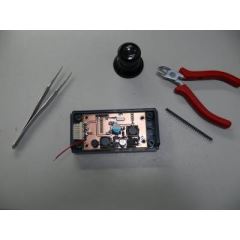
Posted October 7, 2014 by Chris
"In my new Dacia Duster is missing unfortunately an outside temperature indication. A finished thermometer with LCD did not separate from there while the contrast with sunlight usually particularly is. I had still alphanummeric LED display in red there for this project in the best way am suitable. As microcontroller i used a ATTINY 2313. The temperature sensor is a 1-Wire-digital sensor, thus the alignment of the sensor is void."

Posted October 4, 2014 by Chris
"This is a project that’s been in the back of my mind for a long time but I just never seemed to find the time to build it. When I saw the new ATX Breakout Board by Dangerous Prototypes, I was inspired to get the project started."
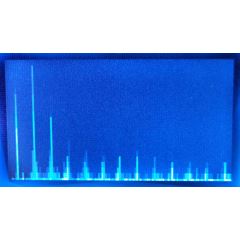
Posted September 30, 2014 by Chris
"A real-time Spectrum Analyzer, with due credit to ‘deif’ on the Arduino forum for making Tom Roberts’ simple 8-bit FFT implementation available. On the above display you can see a typical ‘power spectrum’, with one dominant frequency plus harmonics at fixed intervals."
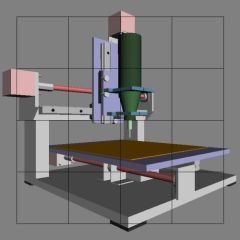
Posted September 10, 2014 by Chris
"I wanted a machine capable of engraving, drilling and milling printed circuit boards, and cutting out shapes in thin aluminium sheet. Basically so that I could more easily build things like this robot. I also wanted to have fun building a technical and robust piece of machinery."
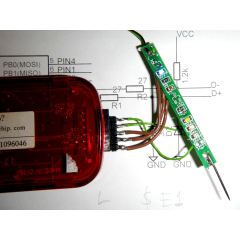
Posted September 7, 2014 by Chris
"This time it’s a Logic Pen controlled by a tiny 6-pin PIC10F202. The PCB is 5 cm by 5mm so it fits just fine inside a regular ballpoint pen and have 5 leds (1 power led and 4 controllable from the PIC), over voltage protection on the probe input, reverse polarity protection using a p-fet."

Posted June 25, 2014 by Chris
"I have to admit, I am usually not the biggest fan of interpreted languages and high level programming. But in this case, they were very convenient.
This is thus a small article about what you can do in 3-4 hours with Matlab and a FTDI USB connectivity to your project. As an example, here is a project where my webcam output gets displayed on my led matrix."
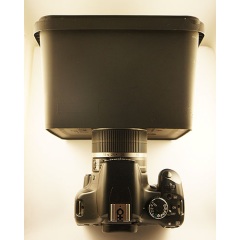
Posted May 21, 2014 by Chris
"This blog serves a narrow but illustrious audience: the photographically inclined electronics hobbyist. Yes folks, I’m going for the masses here:) Kidding aside, if the line above describes you, or even if it doesn’t but you find yourself having to illustrate an article here and there with an analog oscilloscope screenshot, then this article is for you."

Posted May 19, 2014 by Chris
"The main incentive behind this project was to see how much I could cram, in terms of both hardware and software, into a wristwatch-like device that is no larger than the display itself. An OLED display was chosen for being only 1.5mm thick and not requiring a backlight, but mostly because they look cool. "
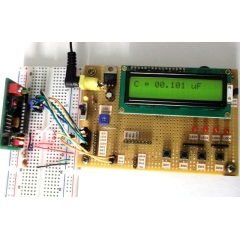
Posted May 17, 2014 by Chris
"Capacitors are one of the most common passive electrical components that are extensively used in all kinds of electronic circuits. In this project, we will discuss a technique of building a digital capacitance meter using a PIC microcontroller. This project can measure capacitance values from 1 nF to 99 uF, with a resolution of 1 nF."






